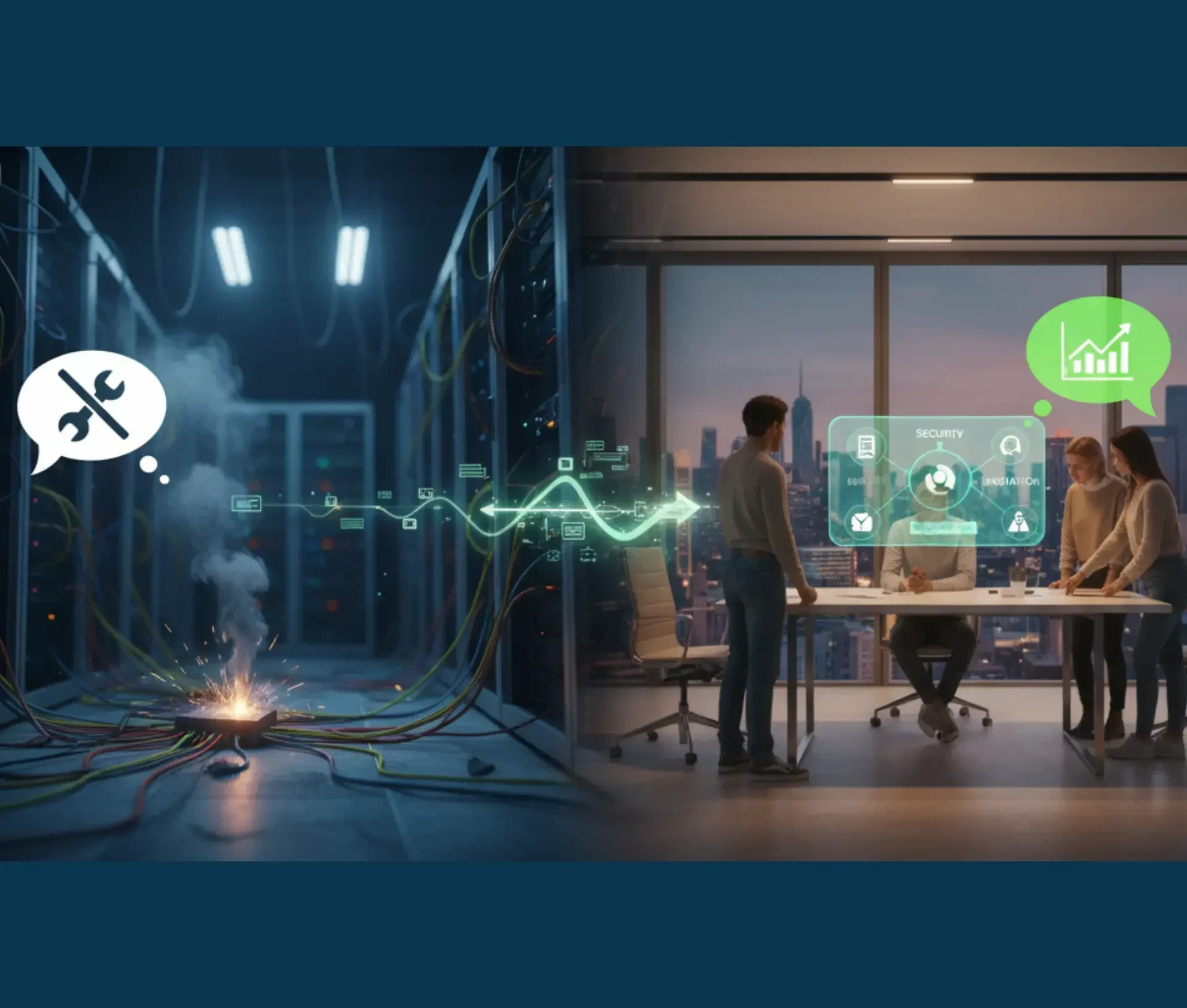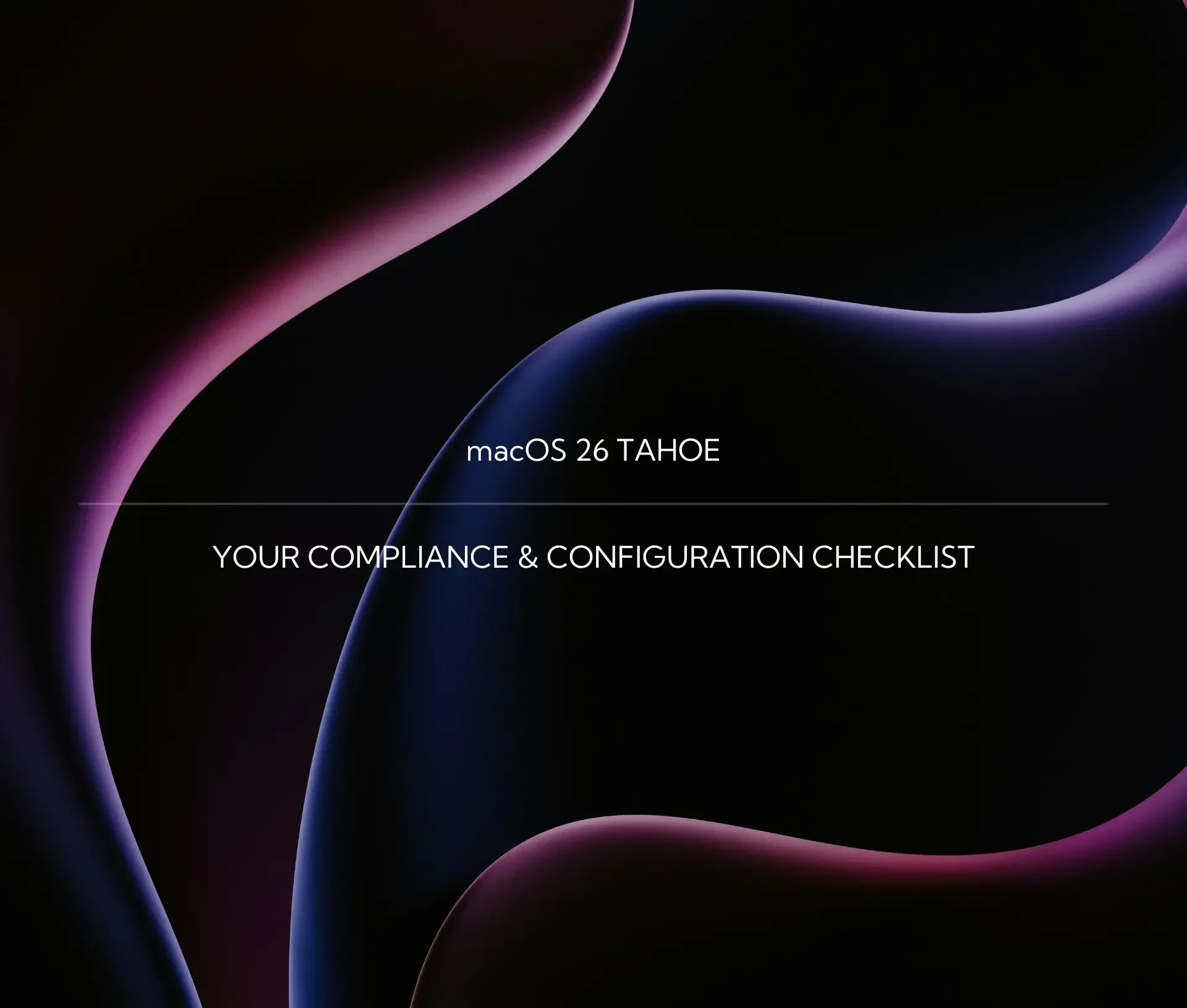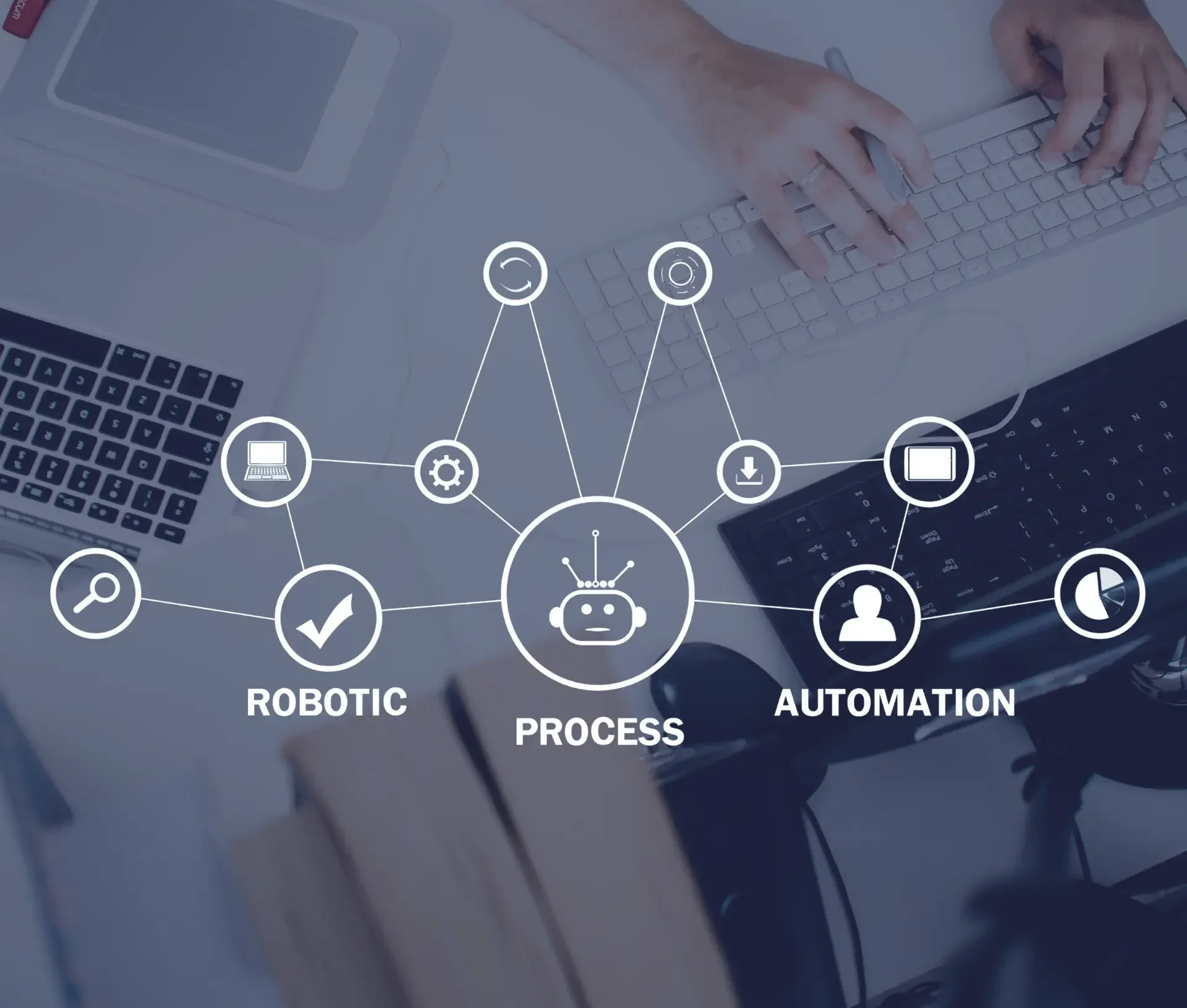No one should have to experience a system failure just to get IT attention. That frustrating, productivity-killing cycle of system crash, phone call, and stalled workflow is finally over. The solution is here: predictive analytics.
This powerful application of machine learning uses real-time data to study your systems, allowing your IT partner to anticipate hardware failures and software issues.
The result is zero disruption and a complete refocus of IT from reactive emergency response to proactive business empowerment.
The Limit of Reactive Support
In the reactive cycle (the old “break/fix” model), the clock starts ticking the moment a device fails. The focus is simply on speed of resolution, but that fails to account for the lost productivity and morale damage that occurs while the user is waiting.
Why Speed of Fixing Is No Longer Enough
- The Downtime Drain: Every single incident, regardless of how quickly it’s fixed, results in lost hours across the organisation, a major contributor to the invisible cost of poor IT.
- Alert Fatigue: Engineers are overwhelmed by high-volume, low-priority alerts, risking the chance of missing the one critical warning that precedes a major failure.
- Strategy Stall: Your in-house team remains trapped in the reactive loop, leaving no bandwidth for the strategic projects that drive innovation and growth.
We explore this in our article The Evolution of IT Support: From Break/Fix to Strategic IT Partner.
The Shift to Predictive ITaaS
Predictive analytics in IT support leverages algorithms to transform maintenance from an art of guesswork into a science of certainty. This shifts the core value of IT from “fixing” to “guaranteeing operation.”
The Predictive IT Monitoring Engine
- Machine Learning Baselines: AI monitors and analyses mountains of historical data (network traffic, disk health, application error logs) to establish a baseline of “normal” performance across your entire hybrid environment.
- Anomaly Detection: When a deviation occurs, a hard drive’s temperature spikes slightly, a login takes 10 seconds longer than usual, and the system flags it instantly as a predicted failure indicator.
- Automated Intervention: Instead of waiting for a user report, the system automatically creates a high-priority ticket for the engineer, identifying the device and the exact component failure before the user experiences a slowdown or crash.
This capability allows your ITaaS partner to proactively contact the user, often saying, “We see your machine is about to fail; we are scheduling a replacement now.”
The Proactive Business Advantage
Moving to a predictive ITaaS model is a strategic investment that delivers tangible ROI far beyond reduced ticket counts.
- Guaranteed Higher Uptime: By replacing components before they fail, you achieve near-zero unplanned downtime, leading to consistent staff productivity.
- Optimised Budget Certainty: Predictive maintenance reduces the volatility of emergency IT spending and allows for smoother hardware replacement cycles, simplifying long-term financial planning.
- Empowered Teams: Your internal IT staff (or your external partner’s team) spends less time on fire-fighting and more time on high-value, strategic work – aligning the entire IT function with business growth.
Actionable Takeaways
- Demand Data-Driven Support: Ensure your partner uses machine learning and behavioural analysis in their monitoring, not just simple, reactive alerts.
- Focus on Prevention Metrics: Measure your IT partner not just by their response time, but by their success in eliminating recurring issues and preventing downtime.
- Integrate Hybrid Data: Ensure your predictive tools can seamlessly collect and analyse data from your entire environment, including Apple, Windows, and cloud services.
Upgrade to predictive IT support.
Partner with Dr Logic for ITaaS.
Related Articles
- The Problem with Reactive IT (and What to Do Instead)
- Proactive IT Monitoring: Moving Beyond Reactive Support
- The Invisible ROI of Good IT Support: Productivity, Morale & Retention
FAQs
How exactly does machine learning predict a failure?
Machine learning establishes a baseline of “normal” behaviour for every component in your system (disk speeds, network latency, temperature). It then continuously analyses real-time data to find subtle anomalies that deviate from the norm. These deviations, which are invisible to human eyes, act as reliable indicators that a component is about to fail.
Does predictive monitoring increase our security risk?
No, it enhances security. Predictive monitoring collects metadata (performance logs, usage patterns, not personal data. This data is analysed within a secure platform, allowing us to spot suspicious activity, like unusual access patterns, that could signal a security breach or a performance issue, strengthening your overall defence.


















































